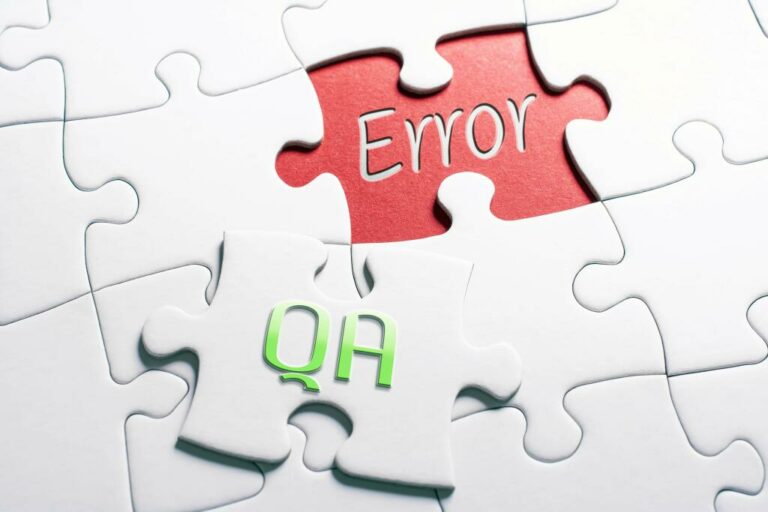Avoid becoming married to set systems and protocol because not every solution will work for your teams or your organization. It’s a mentality of communication and cooperation that should be integrated into your entire organization. DevOps also requires support and reinforcement by management to perform at its best. Classifying each interaction can help you understand the nature of dependency and the level of service offered. You will likely interact with teams differently, but each relationship should be identifiable as one of these modes.
- If the goal of the DevOps team is to make itself obsolete by bringing the other teams together then they can be effective as evangelists and coaches.
- It means building the necessary infrastructure to give teams the autonomy to build, deploy, and manage their products without having to rely too heavily on external teams.
- This makes teams more efficient and saves time related to work handoffs and creating code that is designed for the environment where it runs.
- But for smaller organizations that enjoy strong cultures of shared responsibility and collaborative models, this approach may be the simplest and most efficient way to implement DevOps.
- It might also be helpful to insert “champions” into struggling groups; they can model behaviors and language that facilitate communication and collaboration.
Place high importance on communication, as well as project and change management, to share this vital IT knowledge with other members of the team. This team structure, popularized by Google, is where a development team hands off a product to the Site Reliability Engineering (SRE) team, who actually runs the software. In this model, development teams provide logs and other artifacts to the SRE team to prove their software meets a sufficient standard for support from the SRE team. Development and SRE teams collaborate on operational criteria and SRE teams are empowered to ask developers to improve their code before production. As with the development and operations teams that have opposite objectives, development and security operations have conflicting objectives too. Traditionally, development teams and operation teams focus on policy management, code inspection, etc., and security teams retroactively monitor and mitigate risks.
Software to support your team
Finally, organizational leaders play a crucial role in breaking down silos. By embracing a DevOps mindset and actively promoting collaboration and shared ownership, leaders can help create an environment in which teams can thrive. Once the DevOps roles and responsibilities are clearly defined, organizations can move toward implementing DevOps teams. This section will explore various strategies for creating and integrating these teams within existing organizational structures, such as creating cross-functional teams or incorporating DevOps practices into existing teams.
So, they can be managed as one coherent entity; typically contains detailed attributes about each item, including properties such as manufacturer name, maintenance intervals, location on site etc. For e.g., if you need to replace something it will tell you what other things are dependent on it. Where part of your system is highly specialized, you might use a complicated subsystem team to manage it.
DevOps Responsibilities: On call (Incident Management)
To learn the DevOps culture in detail by registering for the DevOps course online at StarAgile institute. For an organization to fully leverage DevOps, it should go through a complete cultural shift. A DevOps evangelist is the one who acts as this change agent, inspiring, educating, and motivating people across the organization to embark on the DevOps journey. The evangelist removes silos between different teams, brings them onto a common platform, determines the roles and responsibilities of DevOps members, and ensures everyone is trained on the job they are assigned. A DevOps engineer is responsible for designing the right infrastructure required for teams to continuously build and deliver products. The engineer identifies project requirements and KPIs and customizes the tool stack.
A common pitfall is to embed specialists in every stream-aligned team who uses the subsystem. While this may seem efficient, it’s ultimately not cost-effective and out of scope for a stream-aligned team. Keep in mind these team types take different forms depending on the size and maturity of the company. In reality, a combination of more than one type of team, or a team transforming into another, is often the best approach. Modern DevOps teams employ value stream mapping to visualize their activities and gain necessary insights in order to optimize the flow of product increments and value creation. The right DevOps team will serve as the backbone of the entire effort and will model what success looks like to the rest of the organization.
DevOps Roles: Release Manager
Continuous delivery expands upon continuous integration by automatically deploying code changes to a testing/production environment. It follows a continuous delivery pipeline, where automated builds, tests, and deployments are orchestrated as one release workflow. Moving from a legacy infrastructure to using Infrastructure as Code (IaC) and microservices can offer faster development and innovation, but the increased operational workload can be challenging. It’s best to build out a strong foundation of automation, configuration management, and continuous delivery practices to help ease the load. By integrating security into a continuous integration, continuous delivery, and continuous deployment pipeline, DevSecOps is an active, integrated part of the development process.

As such, each team works independently and does not belong to any other team. You need to customize your DevOps strategies looking at the cues offered by early adopters to fully leverage its benefits. The main goal of the team is to deliver higher performance, quickly recover from outages and fail less. While one on-call engineer responds to incidents, DevOps teams assign multiple people for escalations so that the on-call engineer can escalate it to the right person or team. Once the issue is resolved, teams analyze the system again to get prepared for future incidents.
2.2. Creating Cross-Functional Teams
The Security and Compliance Engineer (SCE) is responsible for the overall security of the DevOps environment. The SCE closely works with the development teams to design and integrate security into the CI/CD pipeline, ensuring data integrity and security are not compromised at every stage of the product lifecycle. In addition, the SCE ensures that the products being developed are adhering to governing regulations and compliance standards.
Operations engineers are responsible for managing the infrastructure that supports an application, monitoring its performance, and collaborating with developers to optimize deployments. DevOps emphasizes the importance of delivering value to customers quickly and efficiently. This requires a focus on customer needs and a commitment to continuous improvement. According to Martin Fowler, a renowned software development expert, „The key to delivering quickly is a rapid integration and deployment process, which is at the heart of DevOps“ (Fowler, 2013). Open communication and collaboration are essential to the success of a DevOps culture.
Evaluate ChatOps tools and bots for the right fit
While working as a team is crucial, dealing with members at an individual level is equally important. Regular pep talks, motivations, and inspirations would boost the morale of members, which will significantly impact the overall productivity of the system. This is one of the top DevOps Trends teams should follow; read the full blog to learn more. This is just one extra silo, and has all the same drawbacks with the addition of alienating other teams to the idea of DevOps.

Continuous Integration and Continuous Deployment (CI/CD) sits at the heart of DevOps. This pipeline comprises integrated processes required to automate build, test, and deployment. In the Build phase, a compilation of the application takes place using a version control system. Here, the build is validated based on the organizational compliance requirements. In the test phase, the code is tested, and the Release phase delivers the application to the repository.
How to build a winning DevOps organization structure
As such, security has to be incorporated in the planning stage of development. Site Reliability Engineers (Google Model) – This is a new model for the companies having mature Operations and development teams. Here the model works with the DevOps team and SRE together form the link between the development and operations team. SRE stands for the Site Reliability Engineering, machine learning and ai which is a new team that is formed which takes the code from the development with the metrics and relevant proof that the code is suitable for deployment in the production. The SRE ensures that the product satisfies all the requirements of operations, and is portable to production. SRE and DEV teams collaborate and SRE approves the code based on the operational metrics.
As noted below, a DevOps team is not necessarily a single stand-alone team. That’s one model, but there are other approaches to constructing the organizational structure that undergirds DevOps. Dockers also has the power to help simplify and standardize the deployment of software across an organization. This can be achieved through a variety of ways, such as using Docker Hub or other services. DevOps teams should evaluate each release and generate reports to improve future releases. By gathering continuous feedback, teams can improve their processes and incorporate customer feedback to improve the next release.
Build
Team members from this team may have specialized knowledge in certain microservices (i.e. a billing service), algorithms, or even artificial intelligence. Platform teams create capabilities that can be used by numerous stream-aligned teams, with little overhead. By optimizing a product, platform teams minimize resources and cognitive loads of the stream-aligned team.

Kommentare